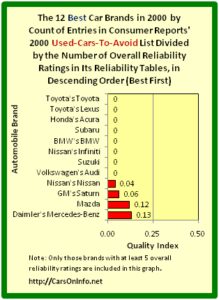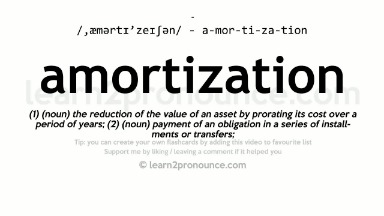Reconcile an account in QuickBooks Online

To run a reconciliation report, navigate to Settings, running multiple businesses choose Reconcile, and then select History by account. When matching transactions, it’s important to compare each entry on your bank statement with the corresponding records in QuickBooks Online, paying close attention to dates and transaction details. If a transaction matches, mark it as reconciled by placing a checkmark next to its amount in QuickBooks Online.
Step 3: Compare your statement with QuickBooks
When reconciling an account, the first bit of information you need is the opening balance. If you choose to connect your bank and credit cards to your online account, QuickBooks will automatically bring over transactions and also the opening balance for you. Sometimes your current bank account balance is not a true representation of cash available to you, especially if you have transactions that have not settled yet.
Balance One Transaction Type at a Time
If you suspect an error in your construction in progress accounting books, see some common bank reconciliation errors below. Finally, compare your adjusted bank balance to your adjusted book balance. Since you’ve already adjusted the balances to account for common discrepancies, the numbers should be the same. Reconciling your accounts is a critical accounting function in your business and one that should be completed regularly. Although it’s relatively easy to undo reconciliation in QuickBooks Online, doing so should be a rare exception rather than something you do as a regular part of your bookkeeping process.
Select a Country
If you need to edit or get more details on a transaction, select it for further action. To modify any information entered in the previous step, use the Modify option. Accurately reconciling your accounts will take some time; however, the accuracy of your bookkeeping and the ability to quickly detect errors — or worse, fraud — is worth the extra effort. If you find yourself spending too much time on reconciliation or needing to undo reconciliation often, consider engaging an external bookkeeper or accountant to help you with the process. The main difference is that you’ll be reconciling credit card transactions instead of bank transactions. If this is the first time you’re reconciling this account, the beginning balance in QuickBooks will be zero.
It will teach you how to review, classify, and accept or exclude transactions that are imported automatically from your connected credit card accounts. The top of the report will display summary information similar to the top of the reconciliation screen. Perhaps the most useful information on the report is the list of uncleared, or outstanding, checks and deposits, which you’ll find at the bottom.
Set aside enough time each month so you can thoroughly examine your bank and credit card statements and carefully reconcile each account. If QuickBooks Online automatically marks some of your transactions as cleared on the reconciliation screen, unmark those so you can complete the reconciliation from start to finish yourself. Compare each transaction on your statement to the transaction in QuickBooks, marking them off only once you’re sure you are selecting the correct ones. It’s recommended to reconcile your checking, savings, and credit card accounts every month. Once you get your bank statements, compare the list of transactions with what you entered into QuickBooks. If everything matches, you know your accounts are balanced and accurate.

You’ll be able to identify discrepancies, such as bookkeeping errors or omissions. The beginning balance in the summary at the top of the QuickBooks reconciliation screen must equal the beginning balance on your bank statement. If you reconciled the account successfully in the prior month, yet your beginning balance doesn’t match your bank statement, then a previously cleared transaction has changed. QuickBooks will provide a link on the screen where you input the statement summary to help you find the changed transaction. This article guides users through the detailed steps on how to reconcile in QuickBooks Online and QuickBooks Desktop, ensuring their financial data aligns seamlessly with bank and credit card statements. You’ll need a few items to perform a bank reconciliation, including your bank statement, internal accounting records, and a record of any pending cash transactions (either inflows or outflows).
It’s crucial to verify that the beginning balance in QuickBooks Online matches the one in your statement, and any discrepancies should be investigated and rectified. Now that we know how to prepare for the reconciliation process let’s begin our guide that will walk you through the steps to efficiently reconcile your accounts in QuickBooks Online (QBO). Click how to calculate your restaurant’s inventory turnover rate on the box with the R until it is clear, then click Save. You will get a pop-up warning that your changes could put you out of balance the next time you try to reconcile. Repeat this process for every transaction you want to un-reconcile. Mark Calatrava is an accounting expert for Fit Small Business.
- Triple-check the statement balance, service charge, and interest income you entered from the bank statement.
- The journal entry goes into a special expense account called Reconciliation Discrepancies.
- In other words, there’s no need — or even any purpose — to reconcile accounts like fixed assets or intangible assets unless there is an outside document you can refer to for reconciliation.
- Compare each transaction on your statement to the transaction in QuickBooks, marking them off only once you’re sure you are selecting the correct ones.
- Reconciliation in accounting is a critical process, serving as a check-and-balance for financial accuracy.
Once you’re done, you should see a difference of $0, which means your books are balanced. From time to time, it is necessary to undo reconciliation. This could be a reconciliation you’ve just completed, or it could be a reconciliation from a previously closed month. If you can’t find a matching transaction, you can mark it as an outstanding transaction or create a new transaction in QuickBooks. If the difference is not zero, we recommend that you try to locate transactions that aren’t recorded in QuickBooks.
Share this post on:




